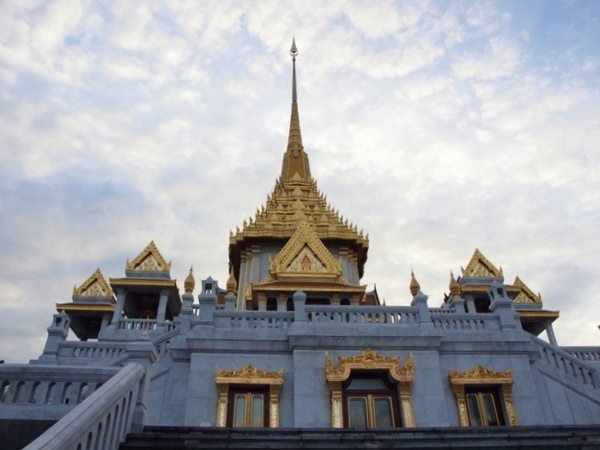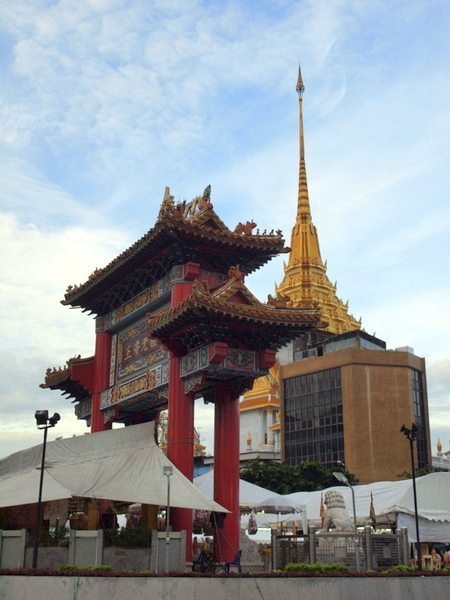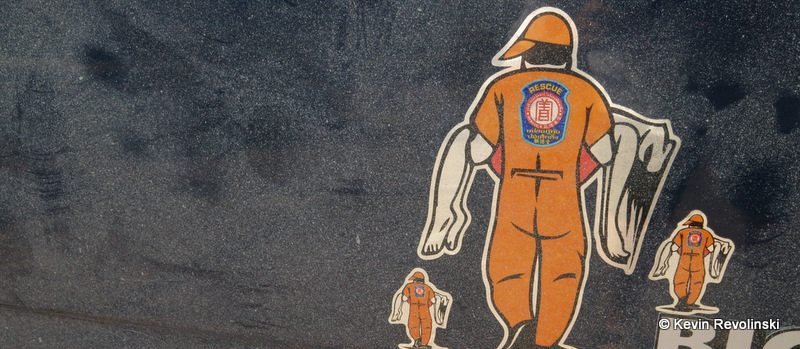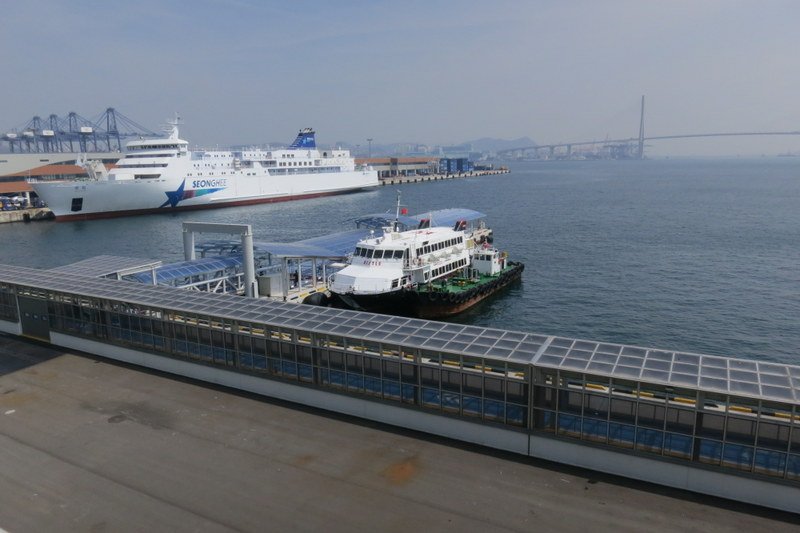Photo Gallery: Bangkok’s Golden Buddha and Wat Traimit
You’re looking at the world’s largest solid gold statue. This Golden Buddha image sits in the upper room of a tall structure inside Wat Traimit, a temple in Bangkok’s Chinatown. Art and/or Thai history majors will be interested that this is in the Sukhothai Period style (1200s-1300s). But its journey to this modern temple is much more interesting — what we know of it, at least.
Measuring a bit more than 9 feet (3 meters) in height, the Golden Buddha weighs in at 5.5 tons. But what is astonishing is that for at least a few centuries, no one knew it was made of gold. The original home was in former Kingdom capital Sukhothai. When that city’s heyday ran out and all things of value were being moved to Ayutthaya, the Thai covered it with black lacquer and an inch or so of plaster. It allegedly was moved to the new capital city of Ayutthaya. The Burmese, who had invaded before and were rather keen on looting, were still a threat and the statue remained in its stucco disguise. After the most brutal attack and sacking by the Burmese in 1767, remarkably the statue was left untouched. (This is surprising as the Burmese took the heads off of many of even the least important statues.)
In the early 19th century, about 20 years after King Rama I made Bangkok the new capital of the Kingdom, many of the Buddha statues were gathered from old or destroyed temples and brought to Bangkok to be placed in new temples. How no one pondered the massive weight of just a plain plaster and glass-chip statue is a bit odd. But its true nature had been forgotten.
In 1935 the Gold Buddha in Hiding was moved to this site, Wat Traimit, where it was left mostly out in the open, just a tin roof to keep the elements off of it. There was no place large enough to take it in until a new viharn, a sermon hall, was built in 1954. A year later, when workers hoisted the bulky Buddha for the move, it was damaged. Beneath the plaster glowed a pretty good explanation for why this statue required so much effort to move. The plaster was removed and the lost and forgotten Golden Buddha was revealed.
The building you see today was completed in 2010 as a proper resting place for such a special statue, and now the Golden Buddha sits in a small salon high up the steps on the 4th floor. The lower floors are home to the Yaowarat (Chinatown) Heritage Center and an exhibit that includes the history and photos of the Golden Buddha.
The temple lies not far from the Chinatown gate and is the most important historical attraction in that area. While the Golden Buddha’s home lights up handsomely at night, you can see the statue daily (and the museum, except Mondays) only from 8am-5pm. It’s 40 baht to see the Buddha image and you must take your shoes off to go inside. The museum is a separate fee of about 100 baht.
It’s easy to get here from the Bangkok subway system (MRT). From Hua Lamphong station it’s a five-minute walk. Map to get to Wat Traimit
And don’t worry — if you are a foreign tourist with a car, apparently you can park right up front.
Read more Mad Traveler articles about Thailand or see posts about Thailand on the blog.














 ORDER YOUR COPY TODAY!
ORDER YOUR COPY TODAY! ORDER YOUR COPY TODAY!
ORDER YOUR COPY TODAY!
Pingback: Dueling Seafood: Red and Green in Bangkok’s Chinatown
Hi Kevin. I went to Wat Traimit last year, June 2014. It’s amazing to think that the golden buddha is made of solid gold, worth quite a lot money too!
Also hard to believe it almost went unnoticed in plaster. Crazy amount of gold.